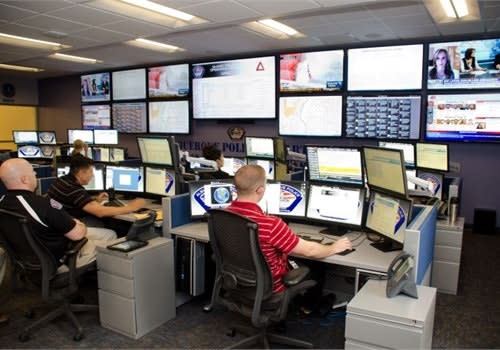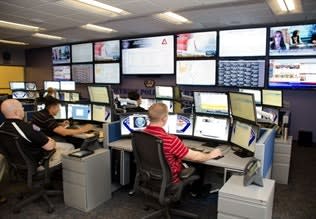The RTCC opened March 1 in the renovated wing of the APD's downtown station. City bonds and federal grants covered its $800,000 price tag. It features a bank of 16 television screens, including a 90-inch monitor, and eight work stations. The center is staffed by four civilian crime analysts, two civilian video production workers, a video intelligence sergeant, live operations sergeant, and a detective.
Twelve sworn officers work in "the bridge," the nickname given to the area clustered with monitors. They monitor calls for service, provide real-time intelligence to field officers, and search law enforcement databases.
Albuquerque's RTCC joined 16 other so-called "smart policing" centers that are reinventing the traditional law enforcement call center, or Public Safety Answering Point (PSAP). Others have opened in Chicago, Houston, New York City and Memphis, Tenn.
Like the others, the RTCC pipes in video from a municipal traffic cameras around the city. The 109 cameras on that private sector network capture footage 24 hours continuously, rewriting older footage with network video recorders. Integrator Sandia Lightwave installed mostly OpenEye software and equipment, RTCC Manager T.J. Wilham tells POLICE Magazine.
The decision to destroy surveillance footage older than 24 hours may seem like a curious one. Why get rid of potentially valuable video data that could help solve cases? The move appears to be an olive branch to civil libertarians who have said the department's approach raises red flags that "Big Brother" is watching.













